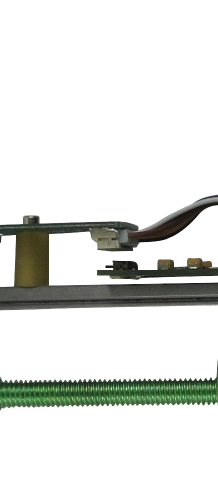Difference between revisions of "Pulses per Microliter"
(→Calculating Pulses/µL for the 27:1 EMO and VOL) |
|||
| Line 5: | Line 5: | ||
The EMO and VOL heads each have: | The EMO and VOL heads each have: | ||
| − | + | * A 1.8° stepping motor; | |
| − | + | ** Running in 1/16th microstep mode; | |
| − | + | * A 27:1 planetary gear; | |
| − | + | * A 1:1 drive screw coupling; | |
| − | + | * A drive screw with a pitch of 18 threads per inch, or 1.411 thread per mm; | |
| + | * And a reservoir with a 17 mm diameter, or 227 mm<sup>2</sup> cross section. | ||
The table below explains how a certain number of pulses (or microsteps) on the motor will generate a certain volume displacement in the reservoir - the pulses/µL number that we need to control the material flow. | The table below explains how a certain number of pulses (or microsteps) on the motor will generate a certain volume displacement in the reservoir - the pulses/µL number that we need to control the material flow. | ||
Revision as of 17:24, 27 July 2020
This is to explain the various gearing on our different heads.
Calculating Pulses/µL for the 27:1 EMO and VOL
The EMO and VOL heads each have:
- A 1.8° stepping motor;
- Running in 1/16th microstep mode;
- A 27:1 planetary gear;
- A 1:1 drive screw coupling;
- A drive screw with a pitch of 18 threads per inch, or 1.411 thread per mm;
- And a reservoir with a 17 mm diameter, or 227 mm2 cross section.
The table below explains how a certain number of pulses (or microsteps) on the motor will generate a certain volume displacement in the reservoir - the pulses/µL number that we need to control the material flow.




